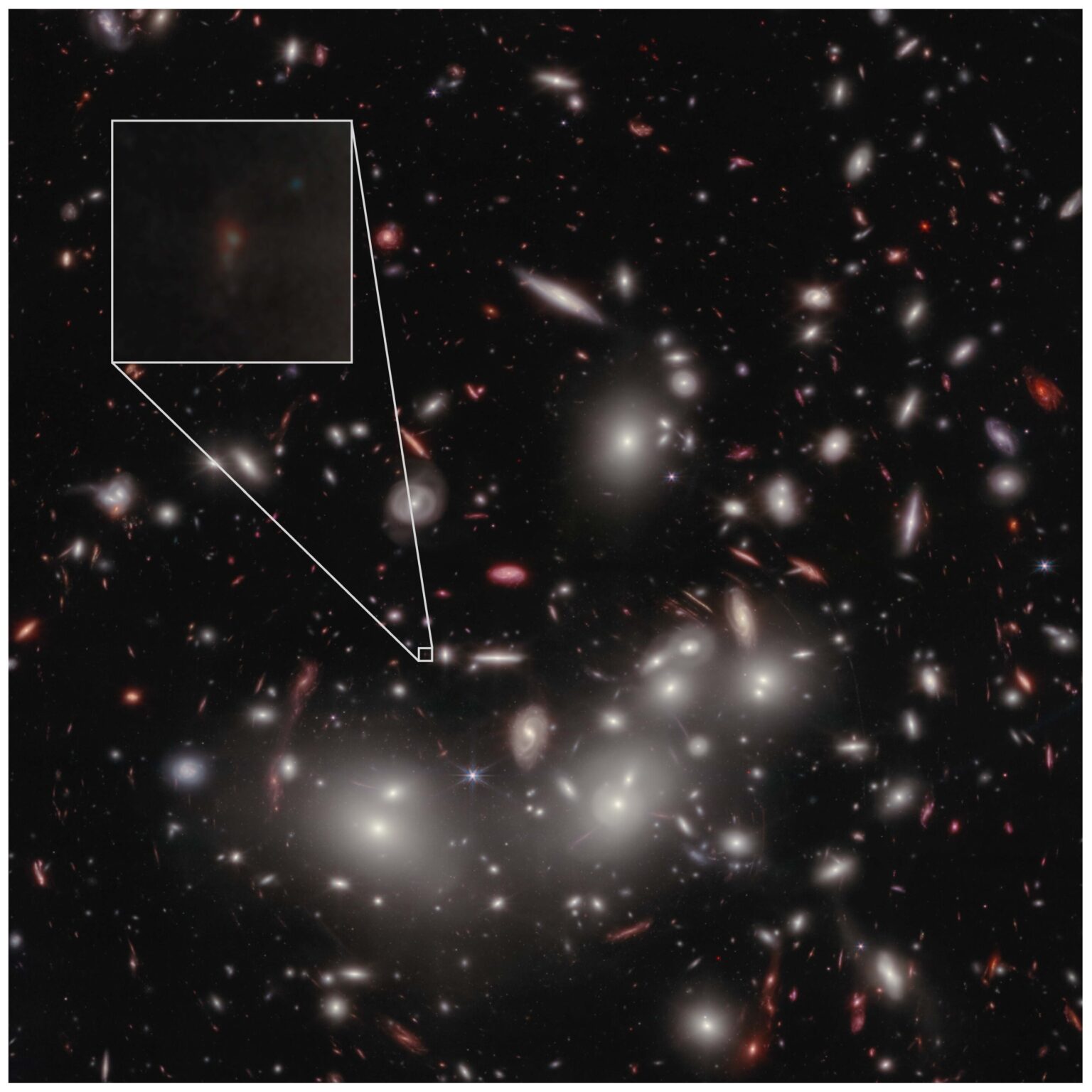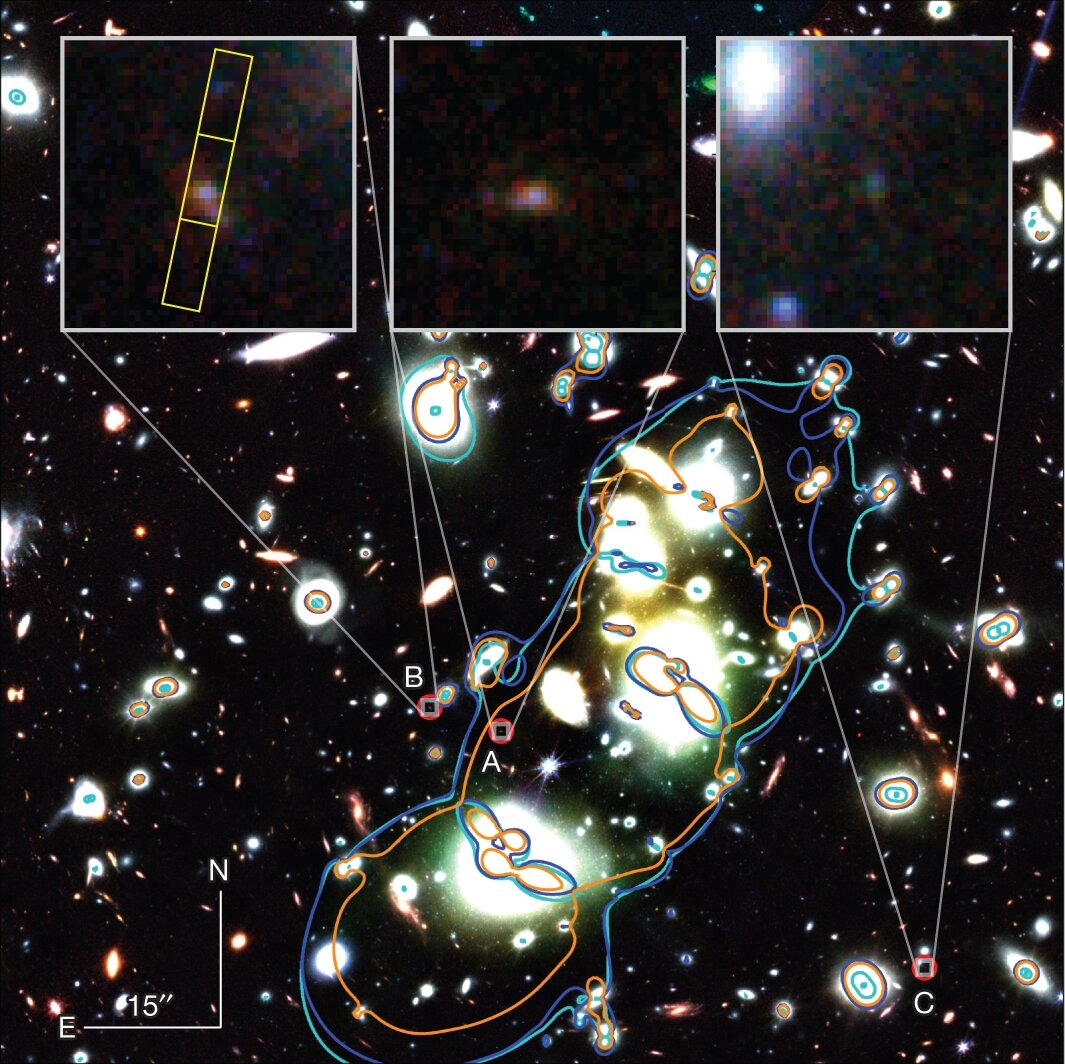An international scientific team led by astrophysicists from the University of California at Los Angeles has confirmed the existence of the faintest galaxy ever seen in the early Universe. The galaxy called MACS1149-JD1, or simply JD1, is one of the most distant known to date, it was formed only 500 million years after the Big Bang. The discovery was made using the James Webb Space Telescope, the results are published in the journal Nature.
First rays of light of the Universe
The first billions of years of the Universe’s life were a crucial period in its evolution. After the Big Bang, which occurred about 13.8 billion years ago, the Universe expanded and cooled enough to form hydrogen atoms. Hydrogen atoms absorbed ultraviolet photons from young stars, but before the birth of the first stars and galaxies, the Universe became dark and entered a period known as the “cosmic dark ages”.

The appearance of the first stars and galaxies several hundred million years later illuminated the Universe with energetic ultraviolet light, which began to burn, or ionize, the hydrogen fog. This, in turn, allowed photons to travel through space, making the Universe transparent.
Establishing the types of galaxies that dominated at that time, known as the Epoch of Reionization, is one of the main goals of astronomy today. But before the appearance of the James Webb Telescope, scientists lacked sensitive infrared instruments to study the first generation of galaxies.
The faintest galaxy
JD1 is so faint and so far away that it is difficult to study it without the help of James Webb and gravity. JD1 is located behind a large cluster of nearby galaxies called Abell 2744, their combined gravitational force bends and amplifies the light from JD1, making it 13 times brighter. This effect, known as gravitational lensing, is similar to how a magnifying glass distorts and amplifies light in its field of view. Without gravitational lensing, JD1 probably wouldn’t have been noticed.

The researchers used the NIRSpec near infrared spectrograph instrument aboard James Webb to obtain an infrared spectrum of the galaxy’s light, which allowed them to determine its exact age and distance from Earth, as well as the number of stars and the amount of dust and heavy elements that it formed during its relatively short life.
The combination of gravitational magnification of the galaxy and new images obtained by another one of the NIRCam infrared instruments also allowed the team of researchers to study the structure of the galaxy with unsurpassed detail and resolution, revealing the three main elongated clusters of dust and gas that form stars. The team has used the new data to trace JD1’s light back to its original source and shape, revealing a compact galaxy that is just a tiny fraction of the size of older galaxies like the Milky Way, which is 13.6 billion years old.
Because light takes time to travel to Earth, JD1 was seen as it was about 13.3 billion years ago, when the Universe was only about 4% of its current age.
Earlier we reported on how James Webb found an even more distant galaxy in the Universe.
According to Phys.org
Follow us on Twitter to get the most interesting space news in time
https://twitter.com/ust_magazine
